Welcome to the Wood Pellet Association of Canada’s July 2023 newsletter. We hope you enjoy reading it and we welcome your feedback.
This Quarter’s Headlines
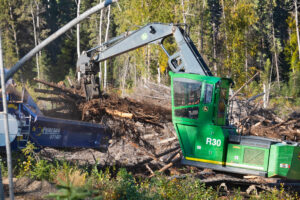
By Gord Murray, Executive Director, WPAC
As I write this message, we are halfway through a catastrophic fire season with devastation experienced across the country and herculean efforts made by fire fighters who have come to our aid from around the world.
Normally, wildfires are how our forests are shaped and how they renew. According to Canada’s National Forestry Database, dynamic processes such as fires burn an average of 21,000 sq km of forest area each year. By the end of June this year, more than 76,000 sq km of forest area had been burned, generating more than 160 million tonnes of carbon, according to the EU’s atmosphere monitoring service Copernicus.
Today Canada is experiencing longer wildfire seasons and more extreme fire behaviour, placing growing risks on communities, critical infrastructure, economies, people’s health and safety, and long-term forest health.
Natural Resources Canada reports that the average area burned annually has more than doubled since the 1970s, and wildfire experts predict that number will at least double again by the end of the century.
Until recently, the role of biomass in fire mitigation has largely been overlooked. The reality is that the wood pellet sector has a critical role to play by converting excess forest floor debris from harvested areas into renewable energy.
Carbon Sink or Source?
The carbon stored in Canada’s forests isn’t just good for the climate; there’s also a significant dollar figure attached to it says Dr. Jamie Stephen, PhD, and the managing director of TorchLight Bioresources. The carbon price planned for 2030 is $170/t CO2, putting the asset value of the above ground biomass in Canada’s forests at $7.5 trillion. Despite this value, the government invests only a few hundred million dollars annually in protecting this asset. Stephen says, “If governments invested a mere 0.1 percent of that value, it would be a massive step change and could go towards removing excess wood waste—fuel—from the forest.”
Excess Fuel and a Warming Planet: Recipe for Disaster
In many countries around the world, including Canada, decades-long policies of suppressing fires have created massive fuel loads just waiting for a spark. Wildfire campaigns over the decades have portrayed fire as an enemy.
The fact is climate change is exacerbating the situation. Today the forest fuels are drier, and according to a study published in nature climate change, there are more lightning strikes, resulting in larger fires especially in Canada’s boreal forests.
Stephen says we can give ourselves a fighting chance by removing high-risk biomass (fuel) from the forest and using prescribed burns. Removing this “waste wood” from publicly owned forests will require governments and public attitudes to sway from the “cost of doing business” to the “cost of saving our forests and communities.”
FireSmart Communities Create Clean Energy
According to the Canadian Government’s databases, the number of disastrous wildfires has increased steadily since the 1980s when there were less than 10 such fires compared to nearly 40 between 2010 and 2019. The database defines a disaster that meets one of the following criteria: more than 10 people are killed, more than 100 people are affected, or an appeal for national/international assistance was issued.
To reduce the likelihood of catastrophic events, experts at Natural Resources Canada point to pro-active forest and fire management approaches such as reducing fuels available to burn (tree thinning, conducting planned burns, removing deadwood), planting fire-tolerant tree species, and creating more fire breaks.
The Nazko First Nation’s territory near Quesnel, British Columbia (B.C.) was hit hard by the mountain pine beetle epidemic and by major wildfires. The Nation wanted to reduce the risk of future fires and with funding from the Forest Enhancement Society of BC, it launched an initiative selectively harvesting dead standing trees, dead trees that had blown down, and smaller understory trees. Resulting sawlogs went to sawmills while pulp logs went to pulp mills in Quesnel. Waste material was processed and sent to local pellet plants.
The wood pellet sector can also play an important role in rehabilitating the forest after a fire and salvaging the fibre. In 2015, the Bobtail Lake Fire burned more than 25,000 hectares of land west of Prince George, BC. Before the arrival of the wood pellet sector, the burned wood would have been left to decay over many years, slowly emitting carbon to the atmosphere. Fortunately, wood pellet producer PacBio saw an opportunity to salvage fibre from this area, creating a valuable product and providing jobs, while at the same time opening up the fire area for reforestation activities to restore a healthy forest to this burned landscape.
The pellets from the fuel in our forests can be used for industrial power generation globally as well as to heat and power our homes and buildings in Canada. Examples continue to grow: Ontario Power Generation operates the largest biomass plant in North America; in Yellowknife, 33 per cent of the territorial government buildings are heated with wood pellets; hospitals, schools, and commercial buildings across the Maritimes use biomass; the Tsi Del Del Nation sells biomass to the Atlantic Power facility, providing power to more than 50,000 homes.
Biomass as a Climate Champion
With the planet’s changing climate, governments across the globe have implemented ambitious climate goals which have caused a seismic shift toward clean energy. Bioheat from wood pellets is shifting from niche to mainstream.
Today, nearly three quarters of the world’s renewable energy is from biomass. Bioenergy accounts for about 10 per cent of total final energy consumption and two percent of global electricity generation. In the United States and the European Union, bioenergy accounts for 60 percent of all renewable energy. In fact, over the past 20 years, bioenergy is responsible for the most greenhouse gas reductions.
Renewable energy is also considered indispensable to Japan’s pledge to become carbon-neutral by 2050. For the first time in history, Japan has surpassed the UK in pellet imports from Canada. Canadian wood pellets are being used in hundreds of power plants across Japan.
Meeting of Minds in Ottawa
Today, biomass is recognized by the Government of Canada as both a solution to wildfire mitigation and as a low carbon technology. But to reach its full potential, good public policy from the ground up and fair incentives from governments are needed. From investments in removal of fuel from the forest to new product innovation and incentives, there’s lots of opportunity for both our sector and governments to do more.
I’m looking forward to our upcoming annual conference in Ottawa where we will explore these topics.
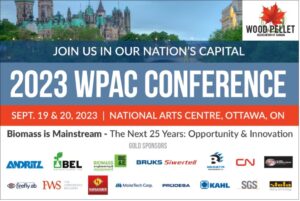
Join us join us at the Wood Pellet Association of Canada’s 2023 Annual Conference in Canada’s beautiful capital city, Ottawa. This year, we will gather at the centrally located National Arts Centre from September 19 to 20, two blocks from the Lord Elgin Hotel, a stone’s throw away from the Rideau Canal, Confederation Park, the Shaw Centre, and Parliament Hill. The participation of our sector from coast to coast is sure to spark the collective energy our annual wood pellet conference generates in Canada with biomass experts from around the world.
The conference will highlight how biomass has moved from niche to mainstream: from Canada to Europe, to Asia, India and beyond, and will bring together thought leaders and experts from around the world to inspire and challenge our sector to:
- Celebrate how far we’ve come and set the stage for the next generation of products and solutions.
- Explore conditions driving record growth for the pellet sector for a look at what’s ahead for Canadian pellet producers.
- Discuss what diversity and inclusion should look like in our sector with the people and communities who are the foundation of our success.
- Discover the next generation of technologies in biofuels in readiness to seize the opportunities ahead.
And there’s more—register for one of our two pre-conference events on Monday, September 18! Hit the greens with industry colleagues at the Meadows Golf & Country Club or ‘Take Safety to New Levels’ by participating in our full-day workshop. This interactive day will include practical examples from colleagues on the frontlines of safety and an exploration of new tools and resources that will enhance safety in your own operations.
Click here to Register Now!
Don’t forget to book your accommodations!
Don’t forget to book your room now for a discounted rate at the Lord Elgin Hotel; rooms are going fast. WPAC delegates can phone 1-800-267-4298 or email groups@lordelgin.ca to make their reservations. Please reference booking code and/or name below to access our special group rate of $299+ per night.
See you in Ottawa!

Registration is open for one of the biggest draws to WPAC’s annual meet-up: the post conference tour. This time it’s three days touring Quebec and learning more about the people, facilities and communities behind our great sector.
The tour begins a few hours after the annual conference ends: mid-day Sept 20. It all starts with the scenic drive from Canada’s capital city, Ottawa, to charming Quebec City and finally on to the south shore of the St Lawrence River in the region of St-Michel-de-Saint.
Cost: $1,100 per person. Registration includes luxury coach transportation and hotels. Meals are not included.
Book Now! Space is Limited
For details, click here.
Book direct by contacting Marlin Travel’s Consultant Fiona Berkopec at 905-628-0338 or fiona.berkopec@marlintravel.ca
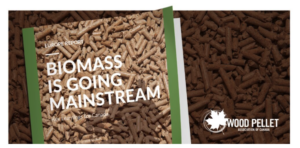
Biomass is now mainstream in Europe and the focus has moved beyond the basics of pellets to how to grow its use and improve technology across the supply chain. As the second largest producer of wood pellets in the world, Canada has played an important role in this success. Now it’s time to look at the role of Canadian pellets closer to home and we will be continuing this conversation in Ottawa at our Annual Conference in September.
WPAC Executive Director Gord Murray recently attended the annual World Sustainable Energy Days event in Wels, Austria. More than 650 participants from 60 countries attended the four-day conference from February 28 to March 3, 2023. The conference’s theme “Energy Transition = Energy Security” highlighted the critical role energy transition plays in securing a clean energy future and progressive policies, as well as technologies and markets that will be required to get society there.
The message was clear: biomass has clearly taken its rightful place in carbon friendly and efficient bioheat solutions at all levels. Today hundreds of formerly coal-fired power plants around the world have made the transition to biomass, powering cities with reliable energy. At the same time there has been impressive growth on the residential and commercial sides. Since 2014, residential demand for wood pellets in Europe has grown by 57 per cent and on the commercial side the demand has grown by a whopping 76 per cent.
To learn more about the efforts of our European colleagues and key learnings, read our newest report, Biomass is Going Mainstream: Key Learnings for Canada.
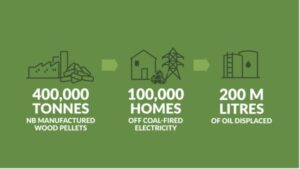
I recently presented at the New Brunswick Energy Efficiency Conference, providing Canadian and international success stories and outlining how we can better utilize local wood pellets to support the province’s climate and energy goals and provide New Brunswick homes and commercial and institutional buildings with renewable, responsible and clean energy.
The wood pellet industry plays a vital role in the New Brunswick economy, supporting more than 625 direct and indirect jobs, procuring $60 million in local services and goods annually and investing over $100 million in capital expenditures.
New Brunswick has committed to end coal generation in 2030. Yet, more than 30 per cent of electricity generated in New Brunswick comes from imported fossil fuels such as coal, gas and heavy oil, most of which is burned in winter to meet electric heating needs.
The fact is, if we took the 400,000 tonnes of local wood pellets manufactured yearly at the five wood pellet plants in New Brunswick and used the fuel here, we could take 100,000 homes off coal-fired electricity and displace 200 million litres of oil.
To learn more about how New Brunswick is making biomass mainstream read the full article.

Advancing wood pellet heating systems in Canada is a topic that generated nearly 350 people signing up from Canada and around the world on May 8 for a free webinar, hosted by the Wood Pellet Association of Canada and media partner Canadian Biomass magazine, to kick off the first annual Bioheat Week.
The high level of interest supports what WPAC has been witnessing in countries across the globe that rely on bioheat to help meet ambitious climate goals. A seismic shift toward the use of clean energy is accelerating the use of bioheat and in many European countries, wood pellets have become a mainstream source of home and commercial heating.
It’s clear from the interest this webinar generated that there is a groundswell of support for wood pellets and increasing awareness of the potential of local bioheat solutions right here at home.
If you missed this popular webinar, you can watch it here or download the presentation here.
Safety News
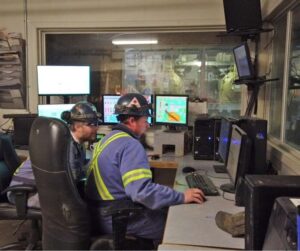
Two free workshops on Human and Organizational Performance for Critical Controls were held in Kelowna on April 5 and in Prince George on May 31 to explore the human factor approach used to understand why process safety incidents occur and how they can be prevented.
These fully-booked workshops were hosted by the Wood Pellet Association of Canada’s Safety Committee, in co-operation with the BC Forest Safety Council, WorkSafeBC and media partner Canadian Biomass Magazine. Their aim was to reduce the risk of incidents by helping participants gain insight into the relationship between human actions and selected critical controls, a control that is crucial to preventing or mitigating a high consequence event.
To learn about the Seven Steps to Safer Operations, read the full story.
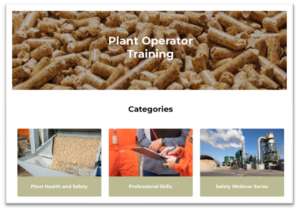
Operator safety training for wood pellet manufacturers has officially risen to the next level. Safety training is now available anytime, anywhere – and it’s as easy as 1, 2, 3 – thanks to WPAC’s new online platform that delivers a free, comprehensive, digital e-learning, safety training program for plant operators and supervisors across companies.
Developed by a team of safety specialists, WPAC and the BC Forest Safety Council, the online training system includes videos, industry resources and built-in knowledge assessments. Funding was provided by WorkSafe BC. Before launching the platform, the system was tested by pellet plant operators from British Columbia and Nova Scotia.
To learn more, read the full article.
WPAC also hosted a short webinar on May 30, 2023 to demonstrate the platform’s ease and functionality. Watch the video and learn how to navigate the new platform.
Or for more information, read the Fact Sheet.
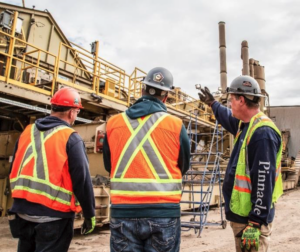
The Wood Pellet Association of Canada’s (WPAC) improved One-Stop Safety Resource, created last year, has been updated with the latest safety information to include:
- The 2023 safety plan
- New video: Innovating Our Way to a Safer Better Product
- Updates on belt dryer project including final report, factsheet and key takeaways
- Final report on deflagration isolation
- Video: 15-minute safety huddle Inherently Safer Design
The compendium reflects our sector’s commitment to safety and to implementing new ways to be safer every day. The safety initiatives are the result of industry-wide participation, leadership, and input. WPAC’s safety committee is the key driver behind most of these initiatives.
Read the full article here.
The One-Stop Safety Resource is a living document that is regularly updated so make a point of checking back. You can find it on WPAC’s website .
In Other News
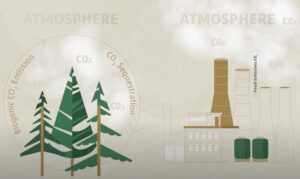
The Wood Pellet Association of Canada has released a new video that demonstrates the powerful role the wood pellet sector plays in building a low carbon, clean energy future, founded on sustainable forestry.
To understand the big carbon picture, or as the saying goes, to see the forest for the trees, requires a look beyond the lifecycle of a single tree to consider the carbon cycle of an entire forest and its products. The truth is sustainably managed forests, like those in Canada, support positive carbon balances.
With a step-by-step approach, the video looks at how carbon neutrality is achieved in well managed forests and how increased demand for forest products leads to greater forest productivity and more carbon being stored in the forest.
WPAC and its members are proud to use innovation and investment to salvage what others viewed as “waste” to produce a clean energy source that supports sustainable, renewable, low carbon solutions to climate change and hold the promise of a clean energy future.
Two highly respected Canadians have been newly appointed to the board of the Sustainable Biomass Program (SBP): Diane Collins, General Manager, KitsumKalum Economic Development Group of Companies in British Columbia, and Nicholas MacGougan, General Manager at Juniper Organics Limited and Grand River Pellets Limited in New Brunswick.
Canadian wood pellet producers who export to Europe and Asia are third-party certified to the standards of the Sustainable Biomass Program (SBP). Since 2013, SBP has been providing assurance that woody biomass – mainly wood pellets and wood chips used for large-scale energy production – is sourced from legal and sustainable sources.
Like the three forest management certification programs, SBP incorporates the use of external audits and third-party certification by independently accredited certification bodies. Rather than replacing established forest certification programs, SBP recognizes FSC and PEFC standards, including those endorsed by PEFC, such as SFI and CSA forest management standards, as well as chain-of-custody certified fibre through FSC, PEFC and SFI.

The Wood Pellet Association of Canada recently participated in an ENplus® workshop at the European Pellet Council Annual Seminar held June 7-9, 2023 in Belgium.
As of April 2023, the certification scheme is present in 50 countries around the world with China being the latest one to join. ENplus® reports 13.3 million tonnes of certified pellets in 2022, and the certified production this year is projected to surpass 14 million tonnes, even after the Russian war in Ukraine caused ENplus® to suspend the certification of all producers and traders in Russia and Belarus.
The importance of independent certification is not new to the Wood Pellet Association of Canada. WPAC is the national licensor of the ENplus® quality program in Canada.
One of the reasons for the success of ENplus® lies in the standard’s attention to trademark fraud, which is closely monitored and investigated, guaranteeing quality through the entire supply chain. As of April 2023, more than 950 fraud cases have been identified and solved as part of the scheme fraud management. Additionally, ENplus® keeps an up-to-date blacklist with over 250 fraudulent entities on the scheme’s website.
WPAC’s participation at the EPC Annual Seminar was funded through the Government of Canada’s CanExport program.
To learn more about ENplus® visit https://enplus-pellets.eu/en-ca/

The Wood Pellet Association of Canada (WPAC) attended the 13th Biomass Pellets Trade and Power Conference in Tokyo, Japan from May 16-18, 2023. The annual event, hosted by the Centre for Management Technology (CMT), attracted more than 350 attendees making it Asia’s largest gathering of biomass producers, including wood pellet, wood chip and palm kernel shell (PKS) traders, utilities, and independent power producers.
A key focus of the conference was the role of biomass in the transition to a more sustainable future. Experts from around the globe examined how biomass can be used as a renewable and carbon-neutral energy source for power generation and industrial energy needs. They also addressed the policy and regulatory landscape surrounding biomass pellets, including the impact of Japanese government policies on the biomass market growth, as well as new advancements to support further net-zero development.
The Japanese market is a critical customer of Canadian wood pellets. This year, for the first time ever, shipments of Canadian pellets to Japan surpassed exports to Europe, however, Canada is losing wood pellet market share to Vietnam.”
“With all of our key Asian customers present at the event, the CMT Biomass Pellet Trade and Power Conference was an important opportunity to reinforce Canada’s reputation as a reliable supplier of high-quality, low-GHG, sustainably produced wood pellet,” says WPAC’s Executive Director Gord Murray. “We did this at the event by meeting Japanese customers, regulators and visiting a Japanese biomass power station.”
WPAC’s participation at the conference was funded through the Government of Canada’s CanExport program.
To request a copy of the report, contact Gordon Murray at gord@pellet.org
